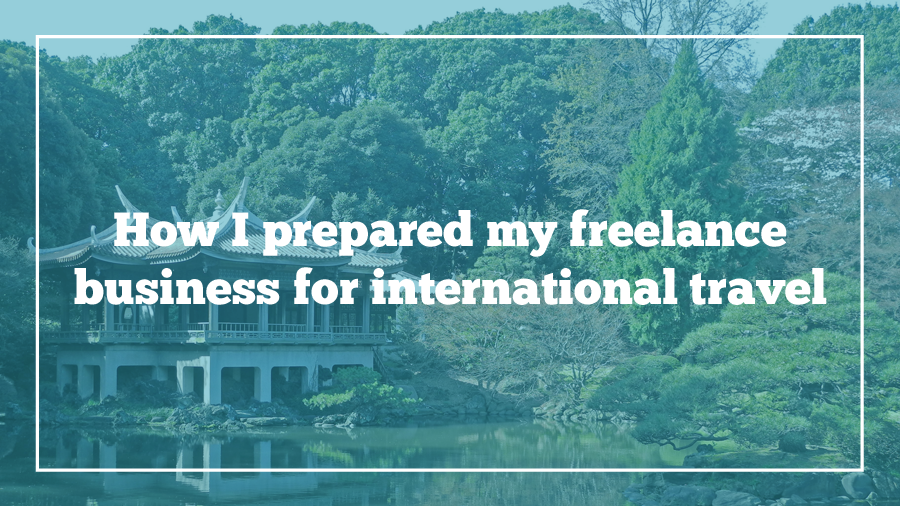
Going to Japan is a once-in-a-lifetime vacation that I’ve decided to take twice. I have a lot of feelings about how indulgent that may seem, which I wrote about last year after I bought the tickets. It’s a Billfold article, so it explains exactly how I was able to afford this, too.
But when you’re self-employed, it’s not only a matter of having the money to spend on a two-week international trip, but the time as well. Obviously, I don’t get vacation leave, much less paid vacation time, the way somebody with a regular job would. So how is it realistic for somebody like me to even go on a trip? Here’s everything I do to prepare.
Figure out what I can deliver
Sorry to disappoint, but I will obviously be working at least a bit during my trip, as I do on all of my vacations and weekends since becoming a freelancer. The trick is figuring out how much I will be able to work while still putting aside the majority of my time to enjoy Japan.
For me, what makes sense is spending about an hour a day at my computer checking email, putting out fires, and publishing my daily travelogue for Forbes. I’ll do my weekly streaming anime review (right now that’s just Record of Grancrest War), deal with minor technical difficulties any of my clients have, and call it a day’s work.
I’ve decided that 5 or 6 AM would be ideal, since that’s when I wrote my daily travel post for Forbes during my 2016 trip. I actually just re-read the whole thing, and while there are some odd word choices in places (I blame the jet lag), it was a rewarding experience and not only monetarily. I can’t wait to process my trip through writing again, and I hope you’ll check it out.
Manage my clients’ expectations
Once I’ve decided what I can do, it’s time to tell my clients how that will affect them. This is my least favorite part of the process because I hate to let people down and tend to put this off. Of course, failing to communicate my plans will let people down a lot more!
So about two weeks ago, I started letting my clients know that I’d be out of the country for a bit so they could get that on their calendars. Then, this past weekend, I sent each client a personal email about what they can expect from me during my trip. I let them know I’d be checking my email around 4 or 5 PM their time each day (yes, that’s how the time difference works out!) and which recurring tasks, if any, I would continue to complete for them while I’m gone.
For everyone else, like recurring clients I don’t work with on a regular basis, I set up a Gmail vacation responder that notes the dates I’ll be gone plus the time I plan to check my email each day. Gmail lets me limit this to people in my contact list, which I do for safety reasons.
Let systems work while I don’t
It goes without saying that I won’t be able to make my regular income while working one hour a day. But my daily earnings won’t be zero. I fully plan to make money even while I’m not working, and I owe it all to the passive income streams I’ve established over the years.
I’ve written extensively about how I use sites like Gunpla 101 and Anime Origin Stories to earn money through affiliate links paired with useful written content. I also sell books and my workbook even when I’m not doing anything to promote them. I’m not going to have a particularly profitable April, but these sites ensure I can still pay bills when I get home.
When I went to Japan for the first time in 2016 I wrote that it felt like I’d spent 20 years preparing. This time hasn’t been much different. Since I booked the tickets a year ago, I’ve always had this trip in the back of my mind. It takes me a lot of planning and organizing to set up travel as a freelancer, but it’s worth it so I can enjoy myself when I’m gone. By communicating clearly and setting up expectations for clients and myself, I know I won’t return to chaos.
Finally, I need to communicate to you, reader, that I’m not going to be updating Otaku Journalist while I’m gone. I will, however, be posting a daily travelogue on my Forbes blog. I can’t wait to tell you all about my trip starting late this week.
Top photo: Shinjuku Gyoen, as seen at the top of this blog post




